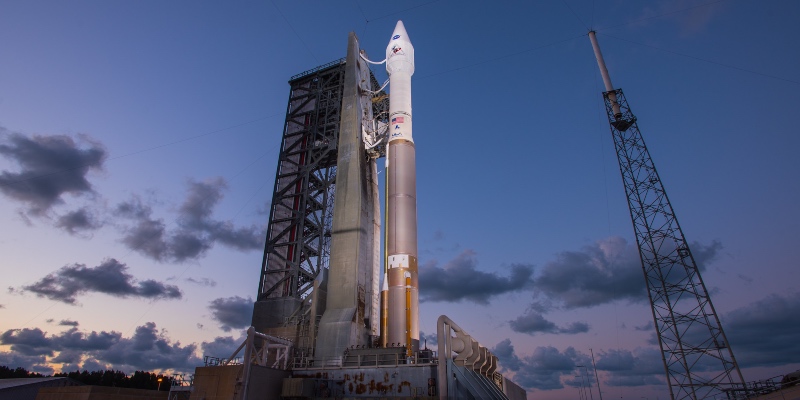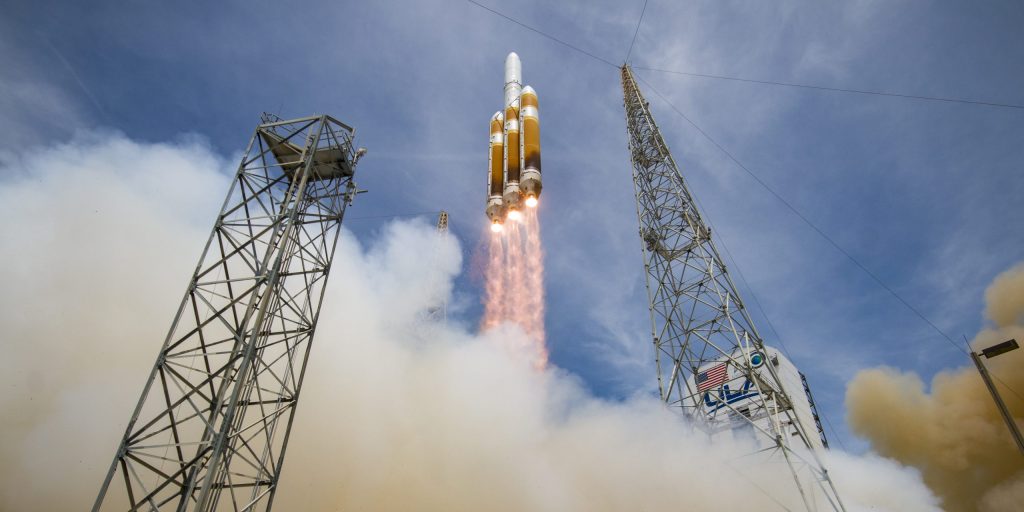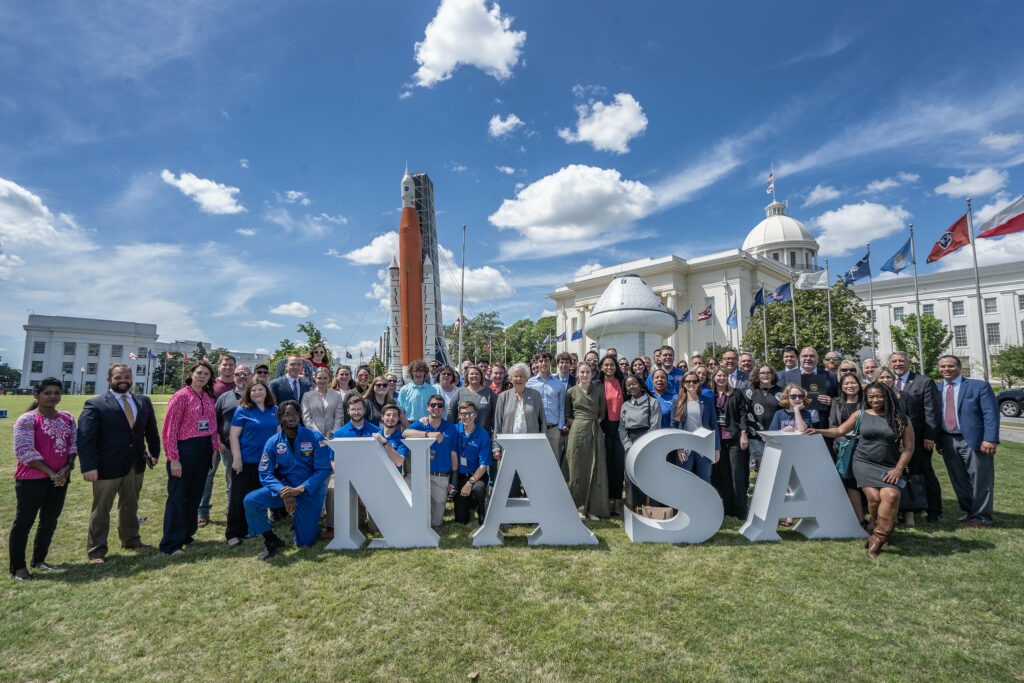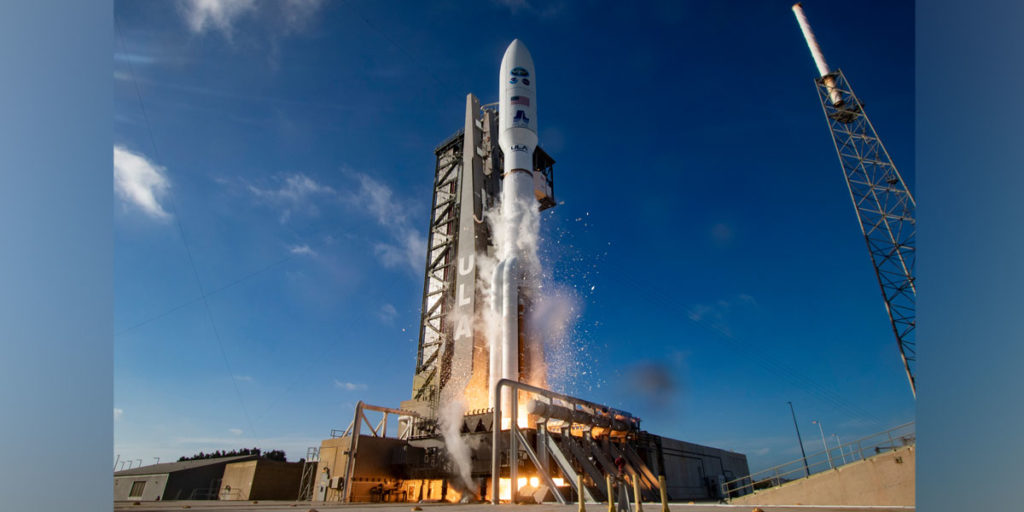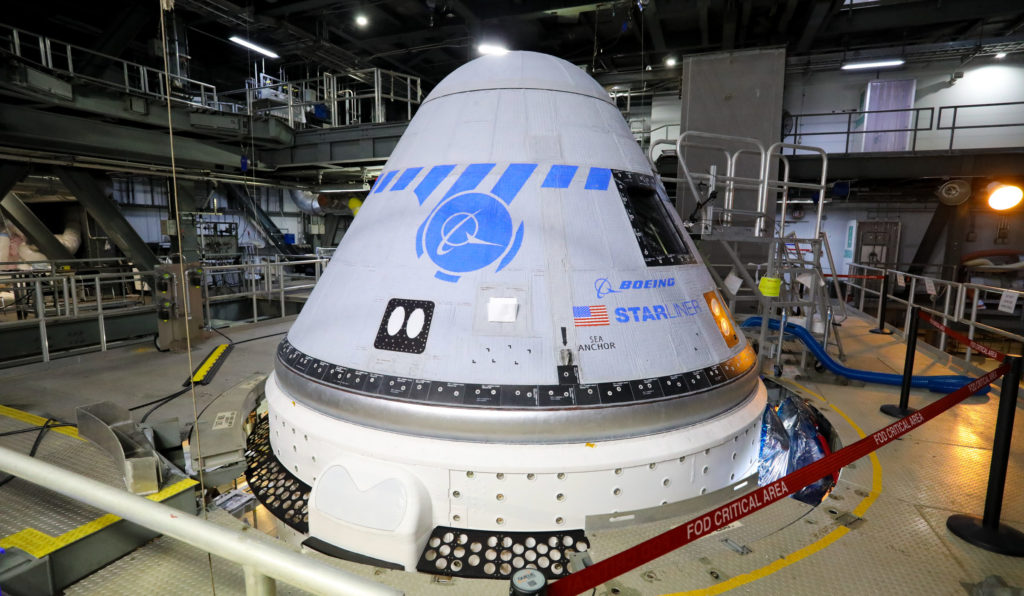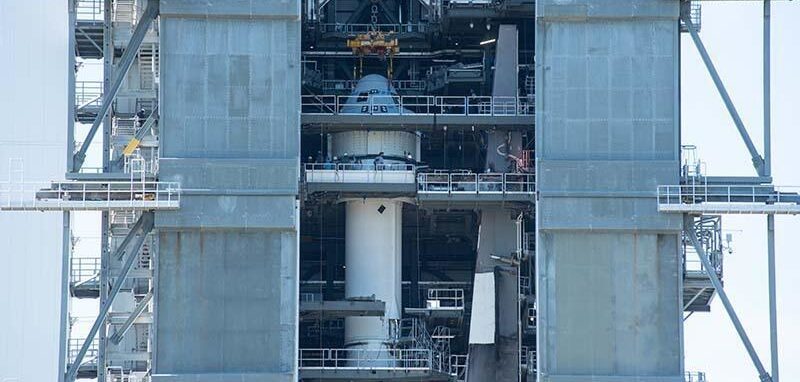It’s been over four and a half years since United Launched Alliance’s (ULA) Atlas V rocket powered NASA’s OSIRIS-REx into space. The Lockheed Martin-built spacecraft — launched on September 8, 2016 — is now on its way home after successfully firing its main thrusters to push away from asteroid Bennu’s orbit.
OSIRIS-REx made history late last year after performing a “Touch-and-Go” maneuver on Bennu and becoming the first-ever NASA spacecraft to collect a sample from an asteroid. The spacecraft has now begun its two-year journey back to Earth as it seeks to return the sample.
While the previous sample collection was historic, the OSIRIS-REx departure sequence on Monday was the mission’s most significant maneuver since it arrived at Bennu in 2018, per NASA. The spacecraft’s thrusters had to change velocity by 595 miles per hour (958 kilometers per hour) for OSIRIS-REx’s path to intersect Earth and enable a successful sample return, which is set for September 24, 2023.
The trip back is a long and rather complicated one, as there is no straight path back to Earth.
NASA explained, “Like a quarterback throwing a long pass to where a receiver will be in the future, OSIRIS-REx is traveling to where the Earth will be. The spacecraft will circle the Sun twice, covering 1.4 billion miles (2.3 billion kilometers) over to catch up with Earth.”
Mission navigation has received confirmation of burn cutoff. #OSIRISREx is headed home with a souvenir of rocks and dusts from a 4.5-billion-year-old asteroid! #ToBennuAndBack pic.twitter.com/BmaK1dkPDB
— NASA Solar System (@NASASolarSystem) May 10, 2021
OSIRIS-REx made history many times during its two and half years of operations on the asteroid, including breaking its own record for the closest orbit of a planetary body by a spacecraft. Bennu is the smallest celestial object ever orbited by a human-built spacecraft.
The spacecraft will bring back the largest sample collected by a NASA mission since the Apollo astronauts returned with moon rocks. Scientists plan to analyze the sample to learn about the development of Earth as a habitable planet. The mission also has importance special to Bennu, which is a carbonaceous asteroid whose regolith may record the earliest history of our solar system. The asteroid may contain the molecular precursors to the origin of life and the Earth’s oceans, per NASA.
Additionally, Bennu is one of the most potentially hazardous asteroids, as it has a relatively high probability of impacting the Earth late in the 22nd century. OSIRIS-REx will determine Bennu’s physical and chemical properties, which will be critical to know in the event of an impact mitigation mission. Finally, asteroids like Bennu contain natural resources such as water, organics and precious metals. In the future, these asteroids may one day fuel the exploration of the solar system by robotic and crewed spacecraft.
OSIRIS-REx is the third mission in NASA’s New Frontiers program. The first two missions – New Horizons and Juno – also launched on Atlas V rockets. ULA builds its rockets at a world-class manufacturing facility in Decatur, Alabama. Marshall Space Flight Center in Huntsville manages the New Frontiers program.
ULA and its heritage rockets have launched missions to every planet in our solar system, including every American-led mission to Mars and a few places beyond. To date, ULA has launched 143 times with 100% mission success.
Sean Ross is the editor of Yellowhammer News. You can follow him on Twitter @sean_yhn




